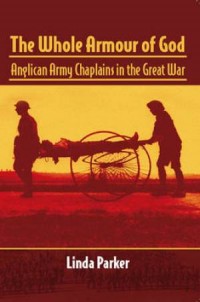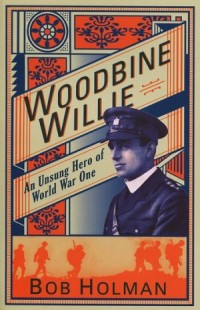Untold Faith Stories of The Great War
Les Ellison
Not all of the men caught in the conflict of WW1 were combatants in the usual way. Many served, suffered and died as stretcher bearers and chaplains. Here are their stories.
Stretcher Bearer!
Aged 19, and a committed Methodist, Charles H. Horton volunteered for the Royal Army Medical Corps (RAMC) forgoing an officer’s commission to serve as an ordinary Stretcher Bearer.
From summer 1915 to spring 1919, on the Somme in France, Ypres in Belgium, Treviso in Italy and in Vienna, Charles risked his life rescuing and treating wounded soldiers in the trenches, in no-man’s land and in Austrian prisoner of war camps.
Stretcher Bearer! edited by Dale Le Vack, draws on Charles' diaries and memoirs to create a unique view of life and saving life in the trenches of World War 1.
Sparing you the horrors of war and battlefield surgery, Charles' is a life spent trying to make the unbearable bearable, wrestle sanity from insanity and find hope amid hopelessness.
Editor Dale Le Vack fills in useful RAMC detail and historical context to complement Horton’s story which stands as a monument to the 7,000 casualties suffered by a body of men whose only role was to try and save, rather than take, the lives of soldiers on both sides.

The Whole Armour of God
Criticised by war writers including Robert Graves and Siegfried Sassoon, mocked in retrospectives like ‘Oh What a Lovely War’ and even denounced by the Church itself, The Whole Armour of God reveals the work and worth of army chaplains in the trenches from the accounts of the chaplains themselves.
At the outbreak of war in 1914, there were only 117 mostly Anglican military chaplains. By the war’s end there were 3475. 172 had been killed or subsequently died, 3 had won VCs and many more decorated for bravery while the entire Army Chaplains’ Department reformed as the Royal Army Chaplains’ Department for what the King himself described as: ‘the splendid work which has been performed.’
Initially restricted to providing recreation and burying the dead, and frustratingly separated from the ordinary soldier by their officer status, the book describes how chaplains developed new methods of operation, just as the soldiers themselves were doing, to serve the spiritual needs of men in this new, horrific kind of warfare.
These untold stories of practical faith under fire show how these heroic and hardworking servants of God were simply seeking to bring God into the lives of men in what ever way they could. And as the 100th anniversary of their sacrifice approaches, that’s how they should be remembered.

Woodbine Willie
Frontline chaplain and Anglican priest, Geoffrey Anketell Studdert Kennedy; popularly known as Woodbine Willie for his liberal distribution of cigarettes - as much as spiritual comfort, set up a trench 'vicarage' and won the Military Cross for recovering no man’s land wounded men of both sides.
A controversial figure, his theology of the conflict initially supported the war and expounded the superiority of the British Tommy over his unsporting German counterpart. Yet by the war's end, the horrors of modern conflict had converted him to Christian socialism and pacifism.
Kennedy's moral war went on long after the armistice: writing books including ‘Democracy and the Dog-Collar’.
This featured the provocatively titled chapters: "The Church Is Not a Movement but a Mob," "Capitalism is Nothing but Greed, Grab, and Profit-Mongering," and "So-Called Religious Education: Worse than Useless".
Working for the Industrial Christian Fellowship, he went on speaking tours of Britain until he was taken ill, and died on an engagement in Liverpool in 1929. Bob Holman's book helps you understand the man behind the myth in the context of his own times and ours.
More About and For Christians in Uniform
For more true faith stories of men and women in the service of their country, and books, Bibles and resources designed for Christians in the armed forces, visit Eden.co.uk's new Christians in Uniform Department.
Latest Blogs

Bible
What Font Size is a Large Print Bible?
"For such a big book, why is the writing always so small?" Discover what makes a Bible 'Large print'.

Bible
What is the Easiest Bible to Read & Understand? (2025 Guide)
Understand Bible translation reading levels easily. Our guide explains the reading age for NIV, NLT, ESV, KJV & more to help you choose the right Bible.

Bibles
The 5 Best Bibles Under £20 (2025 Value Guide)
Looking for a great value Bible? Our 2025 guide showcases 5 of the best Bibles under £20, from high-tech NLT Filament Bibles to beautiful KJV gifts and more.

Meet Our Suppliers
Meet Our Suppliers: Mood Bears
Discover Mood Bears at Eden. These soft, colourful bears help children and adults talk about their feelings. Shop the range, from Hope Bear to Calm Bear.

Meet Our Suppliers
Meet Our Suppliers: Broadland Drinks
Learn about Broadland Drinks, Eden's trusted partner for high-quality communion wine. Discover reliable, non-alcoholic & alcoholic options for your church.

Meet Our Suppliers
Meet Our Suppliers: The Christian Poster Company
Explore our collection from The Christian Poster Company. Discover modern, Scripture-focused art prints, posters, and greeting cards to fill your home with faith.
